| T H E N I H C A T A L Y S T | J U L Y – A U G U S T 2007 |
| | |
NIH Art ShowA DIFFERENT KIND OF PEER REVIEW |
|
Visit the Clinical Center this summer, and you'll find that NIMH is working on ducks; NIDCR has reached a breakthrough on water lilies; and NIAID is perfecting quilts.
These institutes haven't changed research priorities. Rather, their researchers, exercising the other side of their brain, have created paintings, photographs, stained glass, and even origami for a new juried art exhibit called "Art Loves Science," on display in the Clinical Center until August 15.
Medicine and the arts have long intermingled. Paintings have graced the cover of JAMA since 1964 to emphasize the humanities in medicine. Many doctors, if not patrons of the arts, are active participants, as exemplified by the NIH Philharmonia and the NIH Community Orchestra.
So it is perhaps not so strange that some NIH researchers have set aside their Matrigel medium for the more fanciful media of gouache and canvas.
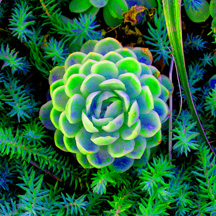
Photo-enhanced enchanting desert flower, created by the CC's Larry Bauer. Click to enlarge.
The Clinical Center is well known for its contemporary art, an eclectic mix of media comprising about 3,000 original pieces mostly from local artists, displayed in eight galleries and along the building's vast network of corridors. The CC has its own art director, Crystal Parmele, who oversees procurement. Curator Lillian Fitzgerald designs and installs the exhibits and handles art sales. This latest exhibit, however, is the first to feature the art of NIH researchers exclusively.
Deanne Alpert, a postbac in NHLBI interested in painting and drawing, came up with the idea for an all-scientist exhibit upon realizing there were many musical programs at the NIH featuring local talent but nothing for the visual arts. She ultimately identified 30 other artists at the NIH interested in participating in a juried art show.
Many of the artists, like Alpert, draw inspiration from their scientific work. Alpert said that studying stained subcellular objects under the microscope has revealed striking shapes, patterns, and color combinations that she never would have visualized otherwise. (Her piece in the show, a painting called "Tape Dispenser," admittedly didn't reflect this influence, but may have very well been inspired by the office supply shortage a few months ago.)
Tyrone Spady, a postdoc in NHGRI, has a photograph of his dog on display, called "Nya." His canine photographs were featured on several news media websites, such as ScienceNow and NPR, supporting the discovery by Elaine Ostrander's NHGRI lab of genes related to dog size and the muscle development of whippet race dogs. Spady studies canine behavior and is inspired by photographing the emotional complexity of dogs.
None of the pieces on display have overt scientific themes, aside from a quilt made by Meggan Czapiga, a staff scientist in the NIAID Biological Imaging Facility. Czapiga said she finds beauty in the color and shapes of viruses. Her quilt incorporates images taken straight off the confocal microscope of respiratory syncytial virus, the most common cause of bronchiolitis and pneumonia among infants.
A few of the researchers participating in the exhibit have extensive art training. Larry Bauer, a nurse consultant with the CC Patient Recruitment and Public Liaison Office, has a bachelor's degree in fine arts. His piece, called "Succulent #1," is a large, computer-enhanced photograph of a desert succulent. His use of saturated color produces a fantastical, dreamlike effect that makes the flower simultaneously familiar, even edible, yet all the while otherworldly.
The "Art Loves Science" exhibit is on the first floor of the Clinical Center in Gallery 3 near the lobby for PET and nuclear medicine.
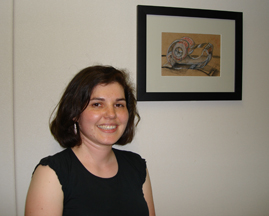 |
| 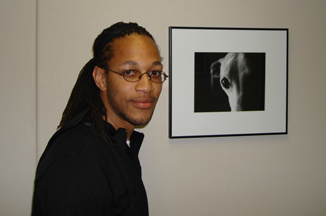 |
| 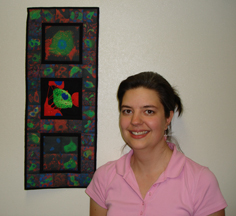
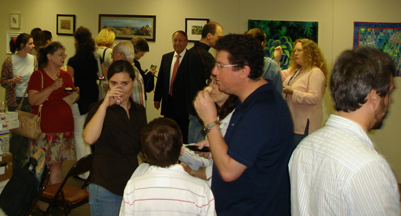
Artists Deanne Alpert, Tyrone Spady and Meggan Czapiga, along with art fans at opening night.